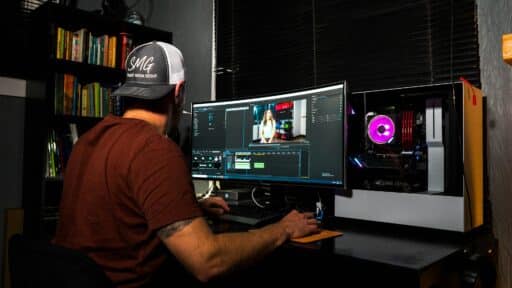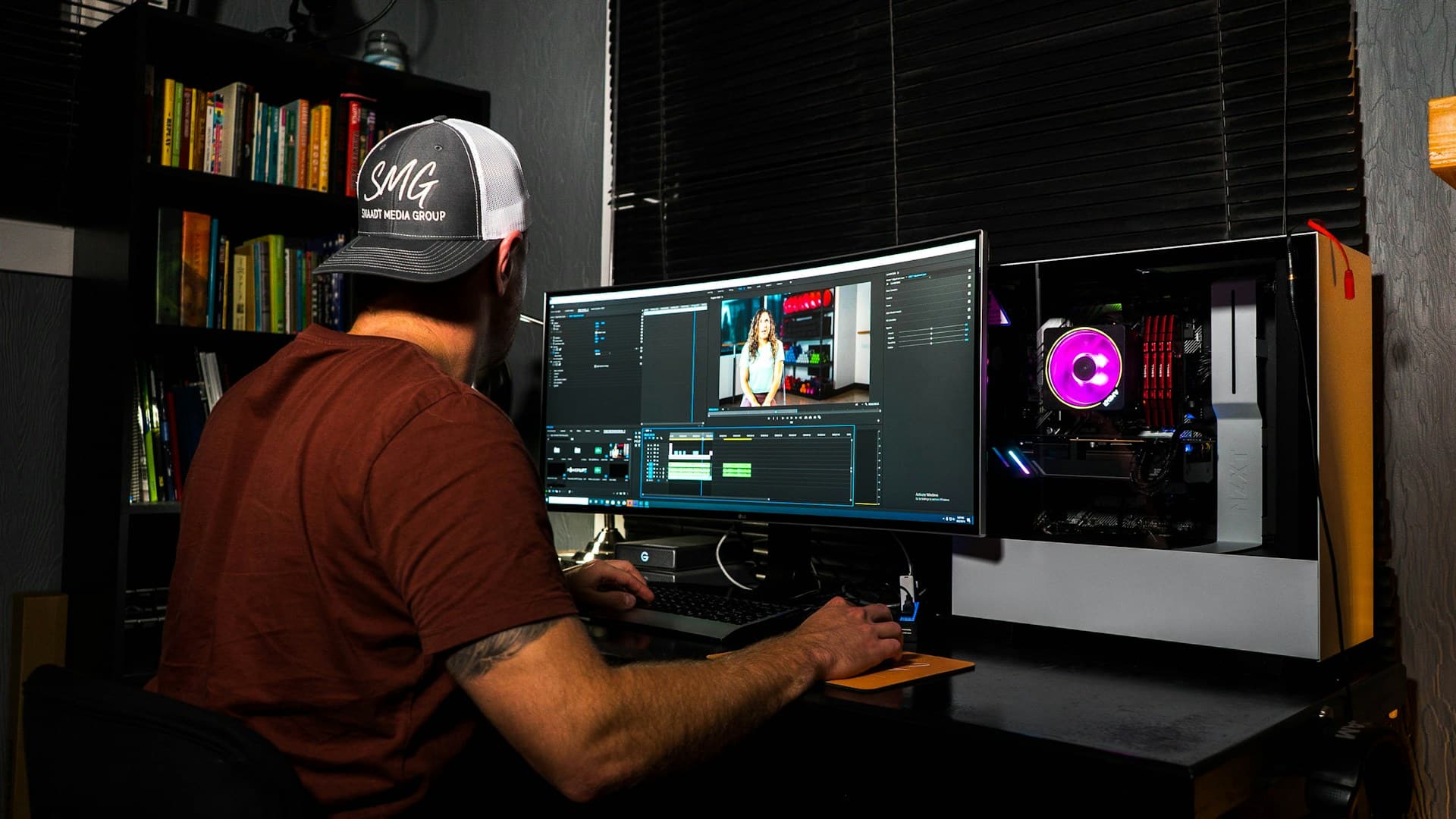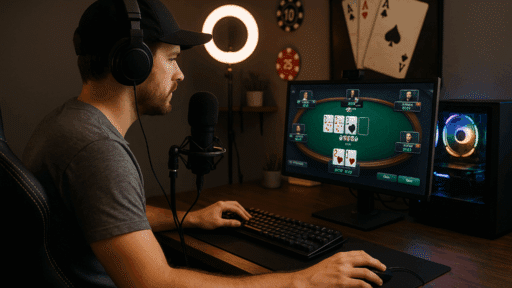In today’s digital landscape, video content dominates with over 2.5 billion active YouTube users consuming 1 billion hours of video daily. Yet for marketers and content creators, video production remains a daunting challenge, often requiring extensive time, specialized skills, and substantial resources to achieve professional results. The traditional video creation process can take days or even weeks, while engagement metrics frequently fall short of expectations.
Enter AI video generators – revolutionary tools that are fundamentally transforming how we create and optimize video content. These intelligent systems are breaking down barriers by automating complex editing tasks, seamlessly integrating sound effects, and streamlining entire production workflows. By leveraging advanced machine learning algorithms, these platforms enable creators to produce compelling, professional-grade videos in a fraction of the time, while maintaining high production values that drive engagement. As we explore the capabilities of AI video generation, you’ll discover how these tools are making expert-level video creation accessible to everyone, regardless of technical expertise.
Why AI Video Generators Are Revolutionizing Marketing Content
AI video generators are fundamentally reshaping the content creation landscape by putting professional-grade video production capabilities into the hands of marketers and creators at every skill level. Where traditional video production required expensive equipment, technical expertise, and lengthy timelines, AI-powered solutions now enable high-quality content creation in hours instead of weeks. Studies show that businesses using AI video tools report up to 70% reduction in production costs while seeing a 65% increase in engagement metrics across social platforms.
These tools excel through their core capabilities: automated scene transitions that perfectly match your brand’s style, vast template libraries with thousands of customizable options, and intelligent optimization that ensures videos perform well across multiple platforms from YouTube to TikTok. The workflow advantages are particularly striking – what once required a team of editors, sound designers, and motion graphics artists can now be accomplished by a single marketing professional armed with an AI video generator. As video consumption continues to grow exponentially, with 82% of internet traffic projected to be video by 2024, these tools aren’t just convenient – they’re becoming essential for staying competitive in the digital marketing landscape.
Amplifying Impact: AI Sound Effects Integration
The Science Behind Sound and Viewer Retention
Sound design plays a crucial role in video engagement, with research showing that videos using strategic audio elements maintain viewer attention up to 85% longer than those without. The human brain processes audio-visual information 60,000 times faster than text alone, making sound a powerful tool for emotional connection and message retention. Studies reveal that viewers are twice as likely to remember content when it features carefully matched and sound effects that complement the visual narrative.

AI Tools for Intelligent Sound Effect Implementation
Modern AI video platforms revolutionize sound design through sophisticated algorithms that analyze video content and automatically suggest appropriate audio elements. These systems can detect scene transitions, emotional tone, and key moments to insert perfectly timed sound effects. Advanced mood-matching technology evaluates factors like pace, color grading, and subject matter to recommend soundtracks that enhance the viewing experience. Real-time audio leveling ensures professional sound mixing by automatically adjusting volumes between voice-overs, and sound effects. The AI-powered libraries contain thousands of royalty-free tracks and effects, categorized by mood, genre, and use case, allowing creators to quickly find and implement the perfect audio elements that resonate with their target audience.
Workflow Transformation: AI-Powered Video Generation Stages
Automated Storyboarding and Scene Composition
AI-powered video platforms like Kling AI have revolutionized storyboarding through intelligent template systems that automatically adapt to your brand guidelines. The process begins with selecting from thousands of pre-designed layouts that maintain consistent visual elements, color schemes, and typography across all scenes. Smart composition tools analyze your assets and suggest optimal placement, while dynamic cropping ensures key subjects remain centered regardless of output format. Brand assets like logos, watermarks, and custom overlays are automatically positioned according to predetermined style rules, eliminating manual adjustments across multiple scenes.
Intelligent Animation Tools for Dynamic Content
Modern AI animation engines bring unprecedented efficiency to motion design through sophisticated algorithms that predict natural movement patterns. The technology automatically generates smooth transitions between keyframes, while smart motion paths ensure objects move naturally across the screen. Advanced facial recognition systems synchronize lip movements with voiceovers and detect emotional expressions to match appropriate animations. Background removal has been streamlined through machine learning algorithms that can instantly separate subjects from complex backgrounds without the tedious manual masking process. These tools work in concert to create fluid animations that previously required hours of manual keyframing, enabling creators to produce dynamic content in minutes rather than days.
Top AI Video Platforms for Marketers: Feature Analysis
Today’s leading AI video platforms offer distinct advantages for different marketing needs. Lumen5 excels in transforming blog posts and articles into engaging social media clips through its intuitive AI-driven storyboard generation and vast media library. The platform’s strength lies in its ability to automatically extract key messages and match them with relevant visuals, making it ideal for content repurposing.
Synthesia revolutionizes video creation with its AI avatar technology, enabling marketers to create multilingual presentations using virtual presenters without filming actual footage. The platform supports over 120 languages and offers customizable avatar expressions, making global content distribution effortless. InVideo stands out for its extensive template library, featuring over 5000 pre-designed layouts optimized for various marketing objectives. Its intelligent scene detection and automated voice-over synchronization streamline the editing process significantly.
When comparing these platforms, consider their unique capabilities: Lumen5 processes videos in under 10 minutes with automatic sound mixing, Synthesia generates avatar videos in hours instead of days, while InVideo’s real-time collaboration features enable team feedback during the creation process. The choice ultimately depends on your specific needs – whether it’s rapid social media content production, multilingual presentations, or template-based marketing videos. These platforms have democratized video creation, offering enterprise-level features at accessible price points while maintaining professional production standards.
Step-by-Step: Creating Pro Videos with AI in 20 Minutes

Phase 1: Input and Ideation
Begin by uploading your raw footage or entering text prompts into your chosen AI video platform. Select the appropriate aspect ratio based on your target platform – 16:9 for YouTube, 9:16 for TikTok and Instagram Stories, or 1:1 for Instagram feed posts. Most AI platforms now offer smart presets that automatically optimize your content for multiple platforms simultaneously. During this phase, quickly outline your key messages and let the AI suggest relevant visual elements from its media library.
Phase 2: AI Enhancement and Refinement
Once your base content is in place, leverage the AI’s enhancement features to elevate production quality. The system will analyze your video’s emotional tone and automatically suggest appropriate sound effects from its library. Apply automated color grading presets that ensure consistent visual appeal across all scenes. Use the AI’s smart cut suggestions to optimize pacing and maintain viewer engagement. The platform’s suggestion engine will identify optimal transition points and recommend effects that maintain smooth visual flow.
Phase 3: Export and Distribution
With your video polished, utilize the platform’s one-click export feature to generate multiple format versions simultaneously. Modern AI video platforms can automatically render your content in various resolutions and aspect ratios while maintaining quality. Take advantage of built-in scheduling tools to plan your content distribution across different social media platforms. Many systems now offer automated caption generation and translation features, ensuring your content reaches a global audience effectively.
The Future of AI-Powered Video Creation
The emergence of AI video generators marks a transformative shift in content creation, delivering unprecedented efficiency and creative possibilities. By reducing production cycles by up to 80% while enhancing engagement through intelligent sound design and automated workflows, these tools have become indispensable for modern marketers. The integration of AI-powered features – from automated scene composition to intelligent sound effect implementation – enables creators to produce professional-quality content that resonates with audiences across platforms.
As competition for viewer attention intensifies, the ability to rapidly produce and iterate video content becomes crucial for marketing success. Start your journey into AI-powered video creation by exploring template-based systems, gradually incorporating more advanced features as you become comfortable with the workflow. Looking ahead, AI video tools will continue to evolve, offering even more sophisticated personalization capabilities and creative possibilities. The future of video marketing lies in embracing these intelligent solutions to stay competitive in an increasingly video-centric digital landscape.







